A Legal Entity Identifier (LEI)—often shortened to LEI number—is a permanent, 20-character code that tells regulators, banks and counterparties exactly who a company is, anywhere in the world. Created in the aftermath of the 2008 financial crisis, the code has become the passport of modern finance: one number that unlocks trade reporting, faster onboarding and true global transparency.
When Lehman Brothers collapsed, regulators worldwide asked a simple question: “Who is exposed—and by how much?” They discovered a patchwork of local registration numbers that could not be cross-matched. No single ID existed for global legal entities.


At the 2010 Seoul summit, G20 leaders agreed to build a global “business card” for every legal entity active in financial markets. The Financial Stability Board (FSB) turned that political promise into a technical blueprint.
In 2014, the Global LEI Foundation (GLEIF) opened its Basel office and began accrediting Local Operating Units (LOUs). The first LEIs were issued that year; by 2016, the European Securities and Markets Authority (ESMA) had written the LEI into MiFID II.


From 0 to 2.4 million active codes in a decade, the LEI is now woven into derivatives, bond trading, fund reporting and—slowly but surely—trade finance and ESG disclosures.
* The code never changes—even if the entity’s name or address does. Updates are recorded in the reference data, not the ID itself.

| Use-case | Real-world benefit |
|---|---|
| Regulatory reporting | Avoids trade rejections by ARMs, TRs and CCPs |
| Bank KYC onboarding | Banks auto-pull GLEIF data, cutting onboarding by 30 % |
| Cross-border payments | Payment anti-fraud engines match LEI to sanction lists |
| Supply-chain diligence | Corporates vet overseas suppliers with one global ID |
| Audit & assurance | Auditors accept the LEI certificate in lieu of multiple registry docs |
| Stage | Real-world benefit | Typical time | Cost |
|---|---|---|---|
| Register | 2-minute online form → Companies House autofill → validation | Same day (Express) | £49 + VAT |
| Renew | Confirm entity still active → status returns to Issued | Same day | £49 + VAT |
| Update | Name / address / parent change → evidence upload | < 24 h | £25 + VAT |
| Transfer | Move LEI to cheaper provider, code unchanged | Same day | £0 |
*Renew up to 60 days early; the renewal date shifts forward a full year, so you never “lose” months.
Myth 1
“An LEI is just a Companies House number.”
Reality
A CRN is UK-specific; an LEI is global and embeds hierarchical data.
Myth 2
“Only banks need LEIs.”
Reality
Investment funds, corporates trading derivatives, and even local governments need LEIs.
Myth 3
“Renewal is optional”
Reality
A lapsed LEI appears red-flagged in GLEIF; trades may be blocked.
Myth 4
“Transferring providers changes the code.”
Reality
The 20 characters never change; only the managing agent does.
Myth 5
“LEIs expose private data.”
Reality
They hold only public legal-entity reference data—no personal data.
Myth 6
“LEI fees fund private profit.”
Reality
£11 goes straight to GLEIF to maintain the open database; the rest covers validation and support.
GLEIF is piloting the vLEI (verifiable LEI)—a cryptographically signed credential that embeds the LEI into blockchains and digital wallets. IOSCO is consulting on using vLEIs for fund identification, and the UK Department for Business & Trade is exploring vLEI in ESG reporting. Expect widespread vLEI rollout by 2027.

No. Only entities trading regulated instruments or subject to FCA transaction reporting rules need one.
£49 + VAT for year one; multi-year plans from £43/yr, with the £11 GLEIF surcharge already included. For a full breakdown of the LEI price and our multi-year options, visit our pricing page.
The status switches to Lapsed; MiFID II, EMIR and SFTR reports are likely rejected.
Banks rely on it for KYC, corporates embed it in supplier onboarding, and fintechs map group structures with a single ID.
Yes—transfer free of charge and keep the same code.
Registration Agents collect documentary evidence; GLEIF performs annual quality checks.
Generally no, unless operating through an incorporated entity such as an LLP.

Highly experienced professional accountant with over forty years involvement in regulated finance and accounting positions in both private and publicly listed companies in Australia, the United States and the United Kingdom.
Dr Healy has worked as employee, partner, consultant, company secretary and director in a number of firms and multi-national entities across diverse industries holding CFO, Finance Director, CEO and Chairman positions.

Darko brings over 20 years of deep technical expertise to Global Compliance, with a background in infrastructure design, cybersecurity, and artificial intelligence. He’s built scalable platforms for financial services, logistics, and SaaS businesses, and has been at the forefront of applied AI for over a decade.

With more than 15 years in executive leadership at public companies, Robert has driven IPOs, major M&A deals, and cross-border expansion in sectors like iGaming, fintech, and digital media. His leadership is built on real-world compliance experience, a passion for transparency, and a deep understanding of operational scaling in regulated industries.

Polina is a seasoned expert in corporate governance and compliance, with extensive directorship experience across the UK and Europe.
She has led governance and regulatory frameworks in the health-tech, med-tech, and financial services sectors — ensuring transparency, accountability, and adherence to industry standards.
Her career includes senior roles at:
In these positions, she has overseen compliance, risk management, and international corporate expansion.
Beyond corporate leadership, Polina is an entrepreneur — the founder of a regulated aesthetics franchise and an investor in cross-border property development.
Fluent in English, Bulgarian, Spanish, and Russian, she combines strong technical expertise in compliance and governance with the ability to navigate complex international business environments.